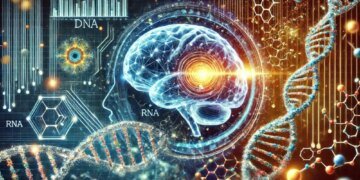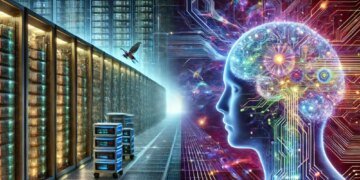# Unlocking Better Neural Network Training with JPEG Compression 📷🤖
In the rapidly advancing field of artificial intelligence (AI) and machine learning, researchers continually explore techniques to enhance neural network efficiency and performance. One groundbreaking method gaining traction is leveraging JPEG compression during neural network training. But what makes this approach so compelling, and why should it matter to AI enthusiasts and professionals alike? Let’s dive deeper!
## The Connection Between JPEG Compression and Neural Networks
Neural networks, often referred to as the backbone of AI, thrive on data inputs—usually in the form of images—during their training phases. The quality of these images plays a vital role in determining the network’s efficiency. Enter JPEG compression, a widely used technique for reducing image file sizes without significantly compromising visual quality, thereby becoming a pivotal aspect of neural network training.
The strategy of incorporating JPEG compression essentially boils down to its ability to simplify data while preserving critical features necessary for learning. By diminishing the size and complexity of input images, JPEG compression not only optimizes power usage but also accelerates the training process. So, how does this tactic impact the effectiveness of neural networks? Let’s explore.
### Pros of Using JPEG Compression
**1. Reduced Computational Load** 🚀
Efficiency is key in training neural networks. With smaller image file sizes, the system requires less computational power to analyze and process data, resulting in brisker training sessions. This computational edge is crucial, especially when working with large datasets, as it directly influences both time and cost-effectiveness.
**2. Enhanced Performance with Data Augmentation** 🔄
JPEG compression introduces variability, which is integral for neural networks to adeptly handle real-world data deviations, leading to improved accuracy. This form of data augmentation helps the AI model become more robust and reliable across various applications.
**3. Efficient Use of Storage Resources** 📚
Handling voluminous datasets is part and parcel of AI research. Compressed images utilize storage more efficiently, enabling quicker data access and management—an advantage when dealing with sets involving millions of images.
**4. Improved Generalization Abilities** 🌍
JPEG compression assists in the elimination of unnecessary details, allowing the neural network focus to hone in on the most pertinent features required for the task. This aids in enhancing the network’s generalization capabilities, improving performance across a diverse range of datasets.
## Potential Challenges and Considerations
While JPEG compression offers numerous benefits, it does come with its set of challenges. The primary concern is the potential loss of critical data due to compression. JPEG, renowned for retaining significant details, still risks omitting subtleties essential for deep learning applications.
Furthermore, achieving the right compression balance is crucial. A universal, one-size-fits-all approach is improbable, as inappropriate usage could lead to less effective models. Careful calibration of compression levels is vital to retain essential image details without overburdening computational resources.
## Practical Implementation: How to Get Started
Ready to integrate JPEG compression into your neural network training routine? Here’s a simplified plan to kickstart your journey:
### 1. Choose the Right Compression Level 📏
Start with a moderate compression level, allowing you to strike a balance between file size reduction and maintaining data integrity. Re-evaluate and adjust as necessary once you assess initial results.
### 2. Evaluate Performance 🧐
Regular assessments are crucial. Continuously evaluate the performance of your neural network using different sets of compressed images. This aids in identifying the optimal compression ratio, ensuring you’re on the right path to optimizing your network.
### 3. Combine with Other Techniques 🔬
Don’t rely solely on JPEG compression. Incorporating it with other data augmentation strategies enriches the training experience, fostering robustness and resilience in your AI model.
### 4. Monitor the Results 📊
Consistent monitoring is key. Observe the network’s readiness and capacity to handle new data to ensure that the JPEG compression method being employed is genuinely boosting its generalization ability.
## In Conclusion: A Promising Avenue in AI Development
The integration of JPEG compression into neural network training offers a promising advancement in AI development. By optimizing your data inputs, this methodology can yield more efficient training procedures, improved generalization competencies, and broader applicability across various AI sectors.
Whether you’re an experienced AI specialist or a passionate newcomer keen on exploring machine learning, JPEG compression is an avenue worth investigating in your next neural network initiative. Why not test it out and witness firsthand how this straightforward yet potent approach can uplift your AI projects?
Keep experimenting and remain curious—it’s an exhilarating period to be involved in the AI revolution! 😊🌟




















































